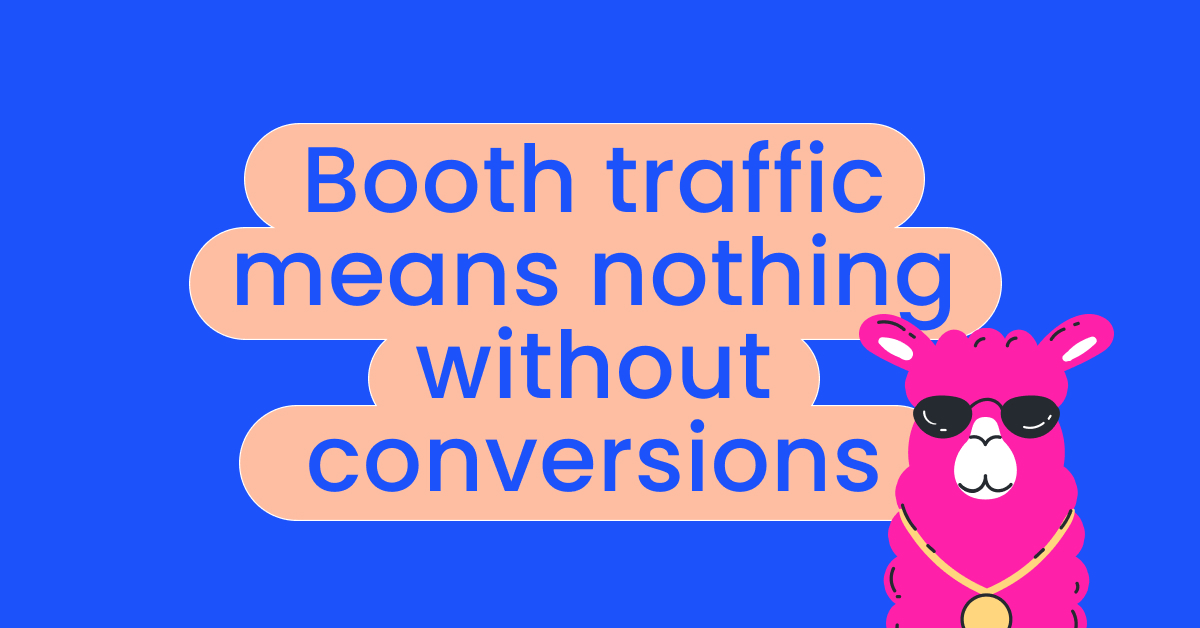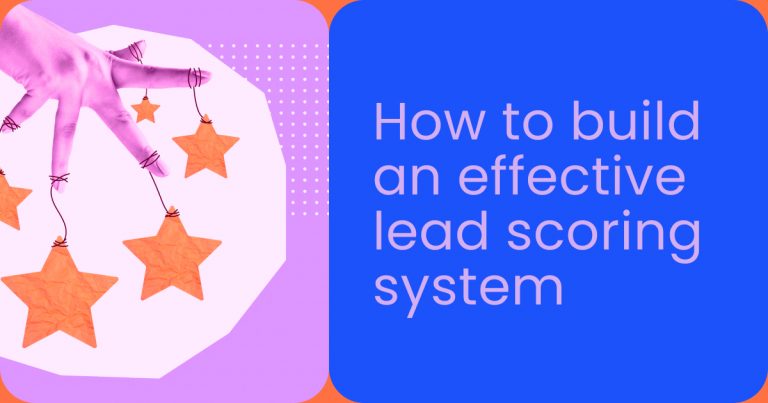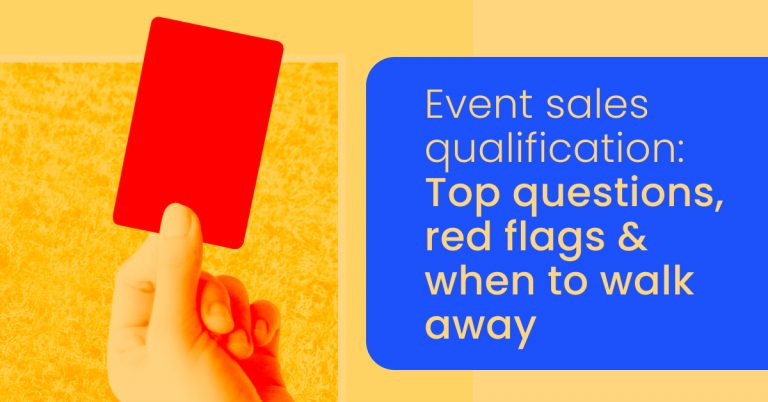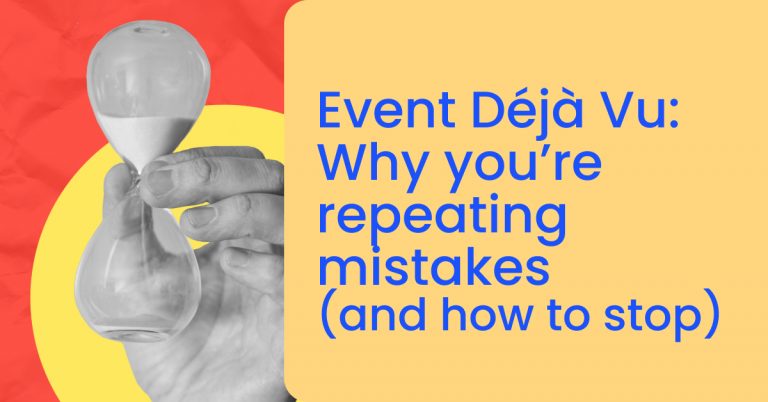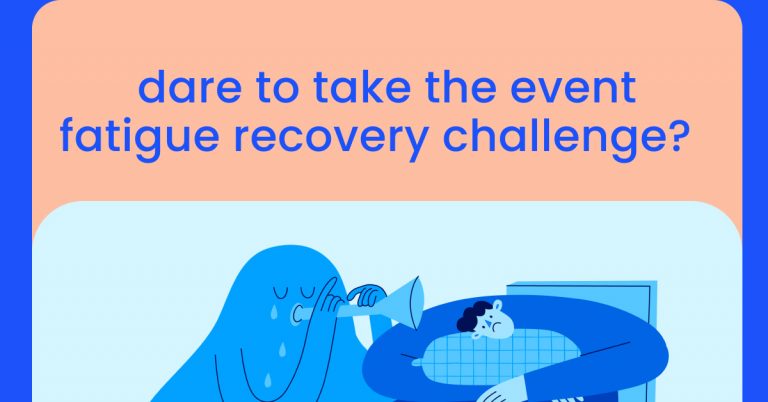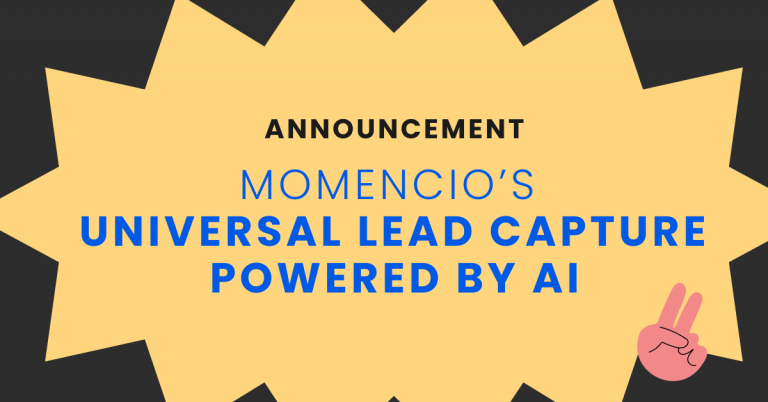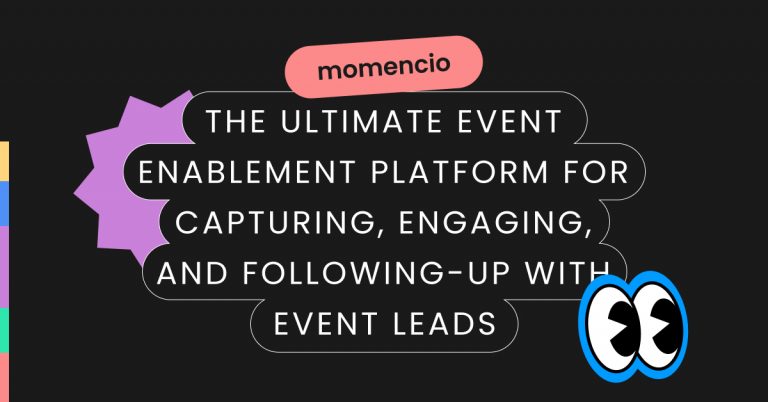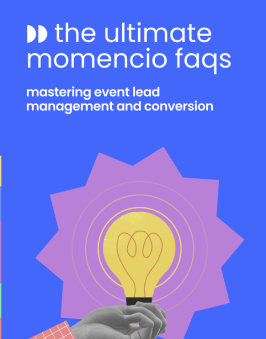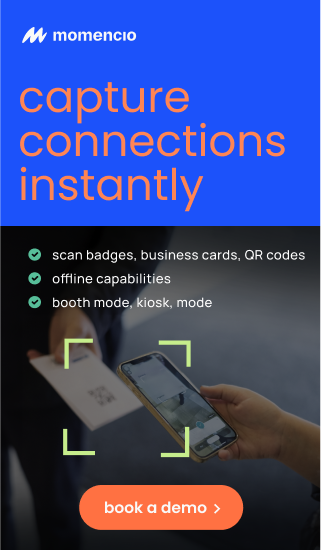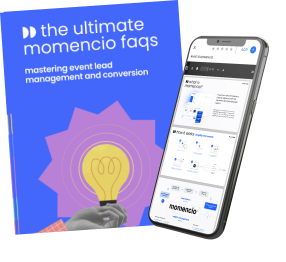A packed trade show booth may seem like a clear indicator of success, but booth traffic alone is a misleading metric. Many exhibitors focus on attracting as many visitors as possible, assuming that more traffic equals more deals. But without a strategy for engaging the right attendees and following up effectively, high booth traffic often results in wasted opportunities.
Simply counting the number of people who stop by doesn’t account for lead quality, decision-making authority, or long-term sales potential. In fact, many attendees visit booths out of curiosity rather than genuine interest in making a purchase. This is why the most successful exhibitors shift their focus from quantity to meaningful engagement, lead qualification, and post-event strategy.
Understanding what truly drives event ROI means looking beyond foot traffic and focusing on converting the right conversations into lasting business relationships. The real question isn’t “How many people visited the booth?”—it’s “How many of the right people took the next step?”
TL;DR: Booth traffic is often seen as the key measure of trade show success, but a crowded booth doesn’t always translate to revenue. 81% of attendees have buying authority, yet only a fraction of booth visitors convert into actual deals. The real focus should be on:
- Engagement over volume: Quality conversations and targeted interactions matter more than sheer foot traffic.
- Key conversion metrics: Lead quality, follow-up effectiveness, and sales pipeline impact are better indicators of success.
- Strategic follow-ups: Companies that follow up within 24 hours are 60% more likely to convert leads into sales.
- Personalization wins: Custom outreach and value-driven conversations outperform generic sales pitches.
Trade shows are about more than just being seen—they’re about turning visibility into valuable business relationships.
Why more booth traffic doesn’t mean more sales
Many exhibitors measure their trade show success by the number of visitors who stop by their booth, but this is a dangerous metric to rely on. While it may look impressive to have a crowd, traffic volume does not equate to lead quality or revenue potential. The real measure of success lies in how engaged and qualified those visitors are.
The danger of the vanity metric
Booth traffic is often considered a vanity metric—it looks good on paper but doesn’t necessarily contribute to ROI. 81% of trade show attendees have no purchasing authority. This means that a large percentage of booth visitors may never have the ability to make a buying decision.
Why more traffic doesn’t mean more deals
- Unqualified attendees: Not everyone visiting your booth is a potential customer. Some are simply there for freebies, networking, or curiosity.
- Lack of engagement: A booth packed with people means nothing if they are not interacting meaningfully with your team or product.
- Sales bottleneck: Too much traffic can overwhelm booth staff, making it difficult to have in-depth conversations with serious prospects.
- Distraction from true leads: A high volume of visitors can make it challenging to identify and prioritize real leads who are genuinely interested in your solutions.
What should you measure instead?
Rather than focusing on sheer foot traffic, exhibitors should track engagement metrics that directly impact lead conversion and sales:
- Dwell time: How long visitors stay at your booth.
- Engagement level: Are attendees asking questions, signing up for demos, or engaging in meaningful discussions?
- Lead qualification rate: What percentage of booth visitors meet your ideal customer profile?
- Follow-up conversion rate: How many of the leads generated from the event turn into actual sales opportunities?
The shift in trade show strategy
Successful exhibitors focus on targeting the right audience and maximizing meaningful interactions rather than just increasing foot traffic. By implementing lead scoring, targeted outreach, and interactive booth experiences, businesses can ensure that they attract high-value prospects instead of just a crowd.
The next section will dive into how to attract the right attendees and create an engagement-driven booth strategy that leads to real business impact.
How to attract the right booth attendees
It’s not about getting as many people as possible to your booth—it’s about getting the right people there. A well-targeted audience increases the likelihood of meaningful conversations, stronger leads, and ultimately, higher conversion rates. Here’s how you can attract attendees who are actually interested in what you offer.
1. Define your ideal attendee profile
Before the event, create a detailed attendee persona based on factors such as:
- Industry and job title
- Decision-making power
- Business needs and pain points
- Previous engagement with your company
Understanding who you want to attract will help you tailor your pre-event marketing, messaging, and booth experience to resonate with the right people.
2. Leverage pre-event marketing
Use email campaigns, social media, and industry publications to pre-qualify attendees before they arrive. Consider:
- Personalized invitations to schedule a demo or consultation.
- Exclusive incentives such as early access to new products, VIP experiences, or event-only discounts.
- Content marketing, including blog posts and videos, to highlight key insights attendees can gain from visiting your booth.
3. Engage in targeted outreach
Rather than relying on random foot traffic, reach out to potential leads ahead of time and schedule meetings in advance. 79% of attendees schedule meetings before the event, making this a critical strategy.
4. Design an interactive booth experience
The right attendees will stay longer and engage more if your booth offers value beyond a simple conversation. Consider:
- Live demos showcasing your product’s impact.
- Hands-on experiences that let visitors test your solution.
- Gamification elements like quizzes or competitions related to your industry.
5. Partner with event organizers for better visibility
Work with event organizers to ensure that your booth is positioned strategically and promoted effectively. This includes:
- Being featured in event newsletters and social media.
- Participating in panel discussions or workshops to establish thought leadership.
- Sponsoring event sessions to align your brand with key topics.
6. Use data to refine future strategies
Track who visits your booth, what they engage with, and how they respond to your messaging. Use this data to:
- Adjust future outreach strategies.
- Identify high-value prospects for post-event follow-ups.
- Improve booth design and engagement tactics for future trade shows.
By focusing on quality over quantity, exhibitors can move beyond vanity metrics and create meaningful connections that drive real business results. In the next section, we’ll explore the key engagement metrics that truly define event success.
Beyond traffic: Key engagement metrics that drive ROI
Measuring success at trade shows requires more than just counting booth visitors. Engagement metrics provide a deeper understanding of how attendees interact with your brand and how those interactions lead to tangible business outcomes. Here’s how to move beyond traffic and focus on the numbers that actually matter.
1. Dwell time: How long are visitors staying?
Booth visitors who stay longer are more likely to be genuinely interested in your solutions. Track dwell time to identify:
- Which booth experiences hold attention the longest
- How engaged attendees are with your team and content
- Whether your messaging is resonating effectively
2. Engagement rate: Are visitors taking action?
Engagement rate measures the percentage of booth visitors who actively participate in your event activities. Key engagement indicators include:
- Attendees who ask detailed product questions
- Visitors who participate in demos or interactive experiences
- Number of attendees signing up for meetings or further discussions
3. Lead quality: Are you attracting decision-makers?
Collecting leads is essential, but not all leads are equal. Analyze the quality of the leads captured by tracking:
- Job title and decision-making authority of attendees
- Industry relevance and whether they match your target customer profile
- Post-event follow-up response rates, indicating real interest in your solutions
4. Content engagement: Are attendees interested in your resources?
A strong indicator of event ROI is how much attendees engage with your marketing materials. Key metrics to track include:
- Number of downloads for whitepapers, brochures, or case studies
- Click-through rates on QR codes directing visitors to digital resources
- Interaction rates with presentation screens or product videos
5. Follow-up conversion rate: What happens after the event?
Engagement doesn’t stop when the event ends. The true test of success is how many event leads convert into customers. Measure:
- The percentage of event leads who engage with follow-up emails or calls
- How many booth visitors move through the sales funnel
- Revenue generated from event-related deals
By shifting focus from sheer booth traffic to meaningful engagement metrics, exhibitors can maximize their trade show investment and drive real business growth. Next, we’ll explore how to turn engagement into actual conversions.
Turning booth engagement into conversion
Engagement is only the first step—the real measure of event success is how many of those engaged leads turn into actual customers. To maximize conversions, exhibitors must focus on structured follow-up strategies, tailored interactions, and data-driven decision-making.
1. Identify high-intent leads
Not all engaged attendees are ready to buy immediately. Prioritize leads based on:
- Their level of interaction at the booth (e.g., demo participation, content downloads)
- The urgency of their business needs
- Their position in the decision-making hierarchy
2. Implement a fast and personalized follow-up strategy
Timing is crucial—80% of trade show leads never receive a follow-up. The best approach is to:
- Send personalized emails within 24 hours of the event
- Reference specific booth interactions to make follow-ups relevant
- Schedule a call or demo while interest is still high
3. Leverage retargeting campaigns to maintain engagement
Many attendees require multiple touchpoints before making a decision. Retargeting ads on LinkedIn, Google, and social media help maintain brand visibility. Key strategies include:
- Serving content based on booth interactions
- Offering limited-time incentives for event attendees
- Using personalized ads featuring testimonials and case studies
4. Nurture leads with educational content
Prospects who are not ready to buy immediately need nurturing. Provide value through:
- Webinars or follow-up Q&A sessions
- Email sequences with educational resources
- Industry reports and case studies tailored to their needs
5. Align sales and marketing for a seamless hand-off
A disconnect between sales and marketing can lead to wasted leads. Ensure a smooth transition by:
- Using CRM tools to track post-event interactions
- Implementing lead scoring systems to prioritize outreach
- Scheduling debrief meetings between marketing and sales teams
Post-event follow-up: The missing link in most event strategies
Capturing leads at an event is only the beginning. Without a strong post-event follow-up strategy, even the most promising leads can grow cold and disengage. In fact, studies show that 79% of marketing leads never convert into sales due to lack of follow-up. The key to success lies in timely, personalized, and multi-channel engagement. Here’s how exhibitors can bridge this gap and turn leads into long-term customers.
1. The 24-hour rule: immediate follow-up matters
The first 24 hours after an event are critical for engagement. Research indicates that leads are 100x more likely to respond when contacted within five minutes versus 30 minutes. The longer you wait, the more interest fades. Best practices include:
- Sending a personalized thank-you email with a summary of the discussion.
- Providing links to relevant resources, such as brochures, case studies, or product demos.
- Encouraging prospects to schedule a follow-up call or demo while interest is still high.
- Using SMS reminders for attendees who showed high intent during the event.
2. Segment and prioritize leads
Not all leads require the same level of follow-up. Using lead scoring techniques, exhibitors should categorize leads into:
- Hot Leads: Decision-makers who showed immediate interest—priority follow-up within 24 hours with a tailored proposal.
- Warm Leads: Engaged attendees who need further nurturing—follow-up within 3-5 days with targeted content and case studies.
- Cold Leads: Visitors with low intent—place in a long-term nurture sequence with periodic check-ins.
3. Multi-channel follow-up for maximum impact
Email alone is not enough. A multi-channel approach improves response rates and keeps leads engaged:
- Email sequences: Automated but personalized follow-ups based on attendee interests.
- LinkedIn outreach: Connect with attendees, send personalized messages, and share industry-relevant content.
- Phone calls or video meetings: Offer direct consultations for high-priority leads.
- Retargeting ads: Keep your brand top-of-mind through targeted social media and Google Ads.
- Direct mail: Sending a physical brochure or thank-you note can enhance credibility.
4. Deliver value beyond the event
Post-event engagement should not be about selling—it should be about solving problems. Build trust by offering:
- Exclusive post-event webinars to dive deeper into key topics discussed at the booth.
- Personalized content recommendations based on the prospect’s needs.
- Special post-event promotions or early access to new product features.
- A dedicated event recap page showcasing event highlights, key takeaways, and next steps.
5. Track, analyze, and optimize follow-ups
Continuous improvement is key to maximizing ROI. Track metrics such as:
- Email open and response rates to measure engagement.
- Meeting or demo booking rates to assess conversion potential.
- Sales pipeline movement to track how leads progress post-event.
- Social media engagement from attendees post-event, which signals continued interest.
6. Align sales and marketing for seamless handoff
The transition from marketing to sales must be seamless. Sales teams should have detailed lead insights from the event, including:
- What sessions or products the attendee showed interest in.
- Notes from conversations held at the booth.
- Recommended follow-up actions based on engagement levels.
- CRM integration to ensure all interactions are logged and accessible.
7. Use AI and automation to scale follow-ups
AI-powered chatbots, automated email sequences, and CRM-integrated workflows can help scale post-event follow-ups efficiently. Benefits include:
- AI-driven email personalization to match content with attendee behaviors.
- Chatbots for immediate post-event engagement and scheduling meetings.
- Predictive analytics to forecast lead conversion potential based on event interactions.
8. Conduct post-event surveys to improve future engagement
Understanding attendee experience can improve future strategies. Conduct post-event surveys to:
- Gather feedback on booth experience and engagement.
- Identify pain points and areas for improvement.
- Understand attendee expectations for future events.
Top strategies to maximize exhibitor success and real ROI
Trade shows are a massive investment, and their success isn’t measured by booth traffic alone. The most successful exhibitors know that engagement, lead conversion, and long-term business impact are what truly matter. Here’s how you can ensure that your trade show participation translates into real results.
Set clear, measurable goals
Success starts with defining clear objectives. Before setting foot at an event, exhibitors must identify what they aim to achieve—whether it’s generating a specific number of leads, booking meetings with decision-makers, or closing a percentage of deals post-event. The more precise and measurable the goals, the easier it becomes to track performance and optimize strategies for future events.
Train your booth staff for maximum engagement
Your booth team is the first impression of your brand, and their ability to communicate effectively can make or break your success. Instead of relying on generic sales pitches, staff should be trained to engage visitors with meaningful conversations. Role-playing exercises, product demos, and objection-handling training help teams prepare for a variety of attendee interactions. Additionally, exhibitors should encourage an active, welcoming approach—instead of waiting for attendees to approach, staff should proactively invite them into conversations.
Make your booth an experience, not just a display
Gone are the days when a simple banner and brochures were enough to attract attendees. Today’s best exhibitors create an immersive booth experience that draws visitors in and keeps them engaged. This could include live product demonstrations, interactive displays, VR experiences, or gamification elements like quizzes and contests. The more memorable your booth, the higher the chances of leaving a lasting impression.
Focus on lead quality over quantity
Collecting hundreds of business cards may feel like a win, but unless those leads are qualified prospects, they hold little value. It’s essential to have a lead qualification process in place, where attendees are assessed based on criteria like decision-making authority, budget, and pain points. Digital lead capture tools can help categorize prospects in real-time and assign follow-up actions based on priority.
Engage before, during, and after the event
Trade show success isn’t limited to the event itself—it begins weeks before and extends long after. Pre-event marketing, such as email campaigns, personalized meeting invitations, and social media engagement, helps build anticipation and ensures that key prospects visit your booth. During the event, leveraging social media for live updates, event hashtags, and real-time content sharing increases visibility. Post-event, a structured multi-touch follow-up approach—including personalized emails, phone calls, and remarketing campaigns—helps maintain engagement and guide leads through the sales funnel.
Measure and optimize performance metrics
You can’t improve what you don’t measure. Successful exhibitors track key performance metrics such as lead conversion rates, engagement levels, and cost per lead to assess event ROI. Analyzing attendee behavior—such as booth dwell time, content interaction, and session participation—provides valuable insights that can refine future event strategies.
Use technology to streamline efficiency
Technology plays a critical role in optimizing trade show success. AI-powered chatbots can assist in pre- and post-event engagement, CRM integrations ensure seamless lead tracking, and event apps simplify content sharing. QR codes and digital business cards reduce the need for paper-based materials while ensuring instant lead capture. By leveraging technology, exhibitors can enhance efficiency and scalability while maintaining a high level of personalization.
Learn and adapt for continuous improvement
No two trade shows are the same, and neither should your strategy be. Conducting a post-event debrief allows teams to assess what worked, what didn’t, and where improvements can be made. Collecting attendee feedback and analyzing engagement data can reveal trends that help exhibitors refine their approach for future events. Success is a process of continuous learning and adaptation.
Conclusion
Booth traffic may look impressive, but true trade show success is about engagement, quality leads, and long-term business relationships. Exhibitors who focus on strategic goal setting, interactive experiences, and structured follow-ups are the ones who see the highest ROI.
Trade shows are not just about making connections—they are about converting those connections into real opportunities. By leveraging data-driven insights, optimizing engagement strategies, and maintaining a consistent follow-up plan, businesses can turn their trade show investments into revenue-generating success.
Take the next step toward trade show excellence! Book a demo with momencio to discover how real-time lead tracking and automated follow-ups can revolutionize your event success.
FAQs
- What is the best way to measure event ROI?
- Event ROI is best measured through metrics such as lead conversion rate, cost per lead, engagement levels, and sales pipeline progression. Tracking these indicators over time ensures that trade show efforts translate into tangible results.
- How soon should I follow up with leads after an event?
- The best practice is to follow up within 24 hours of the event. The sooner you engage, the higher the chances of conversion, as interest is still fresh.
- What are the most effective lead capture techniques at trade shows?
- Using digital lead capture tools, QR codes, and interactive booth experiences can streamline data collection and improve accuracy. Engaging in meaningful conversations rather than just scanning badges ensures higher-quality leads.
- How can I improve booth engagement?
- To boost engagement, consider live product demos, hands-on experiences, gamification elements, and social media promotions. A well-trained booth team can also proactively engage visitors instead of waiting for them to approach.
- What should be included in a post-event follow-up strategy?
- An effective follow-up strategy should include personalized emails, targeted content, phone calls for high-priority leads, retargeting ads, and post-event webinars to keep attendees engaged.
Interesting facts from research
Understanding the key data behind trade show success can help exhibitors make better-informed decisions. Here are some research-backed insights:
- 81% of trade show attendees have buying authority, meaning four out of five visitors to your booth can make purchasing decisions.
- 92% of trade show attendees say they are looking for new products or services.
- Companies that follow up within 24 hours of an event are 60% more likely to convert leads into sales.
- Trade shows generate more B2B leads than any other marketing channel, with an average cost per lead less than 40% of outbound sales efforts.
